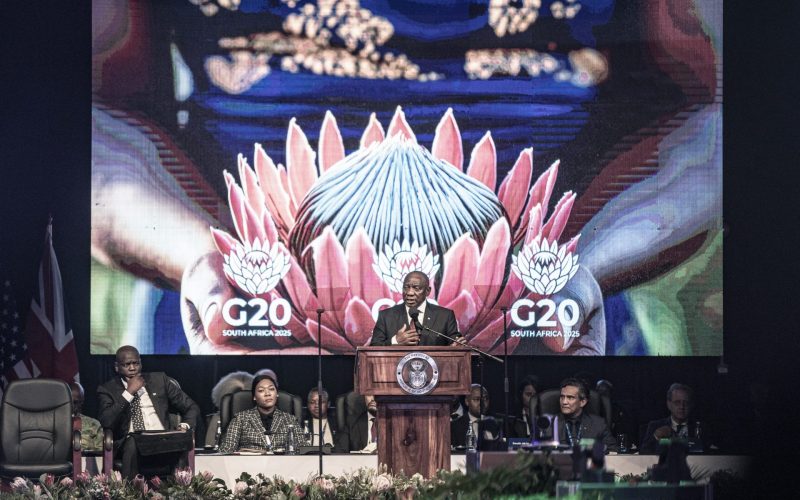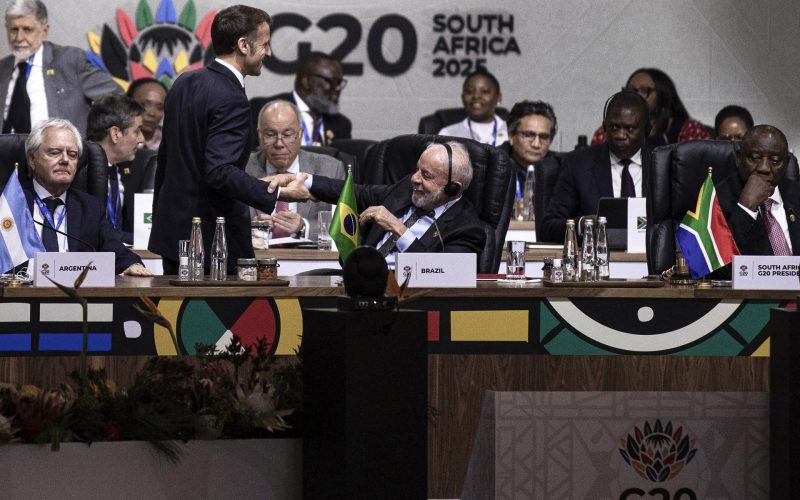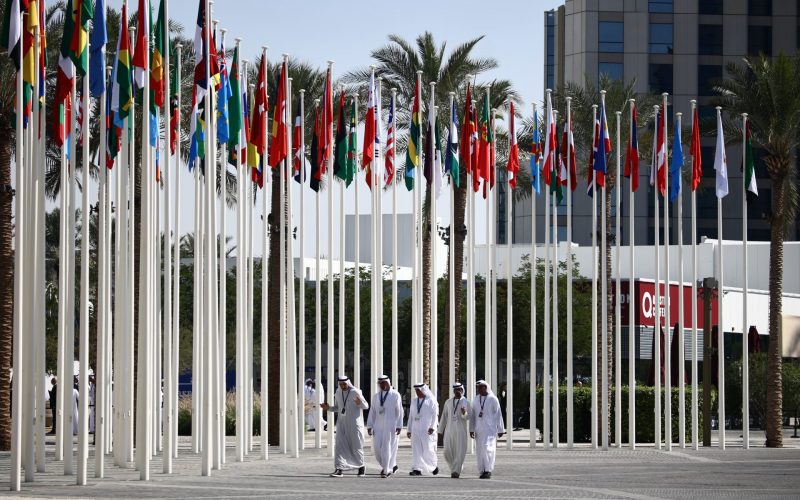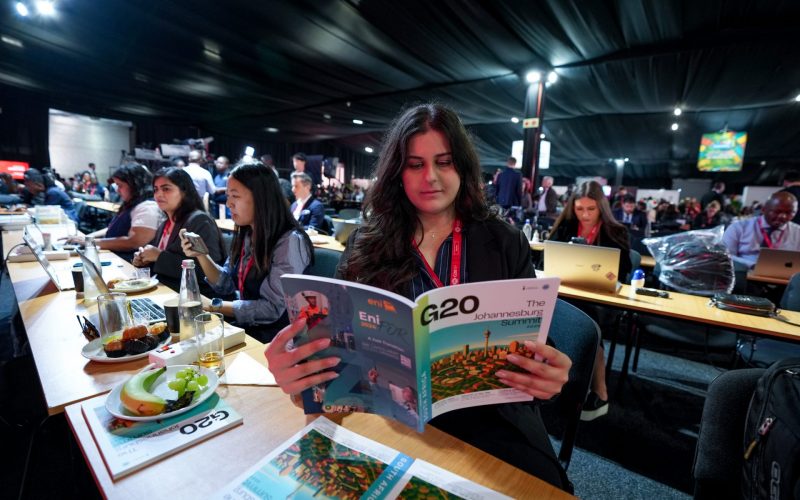Recommendations
- Accelerate the removal of intra-African tariffs on food products, ensuring that food items are not overly classified as sensitive or excluded from trade liberalisation schedules.
- Differentiate non-tariff measures, especially sanitary and phytosanitary (SPS) standards, by enterprise size to reduce compliance burdens for small and micro enterprises.
- Implement simplified SPS certification regimes for small and micro enterprises with grant funding and support from national governments and international agencies.
- Develop a continental policy framework for strategic food reserves to coordinate cross-border food aid and enhance resilience against disasters and emergencies.
- Amend the AfCFTA Protocol on Intellectual Property Rights to include annexures on genetic resources and plant variety protection, supporting biodiversity conservation and BioTrade.
Executive summary
This policy brief examines the potential of the African Continental Free Trade Area (AfCFTA) agreement to advance both food security (which ensures access to sufficient, nutritious and safe food regardless of origin) and food sovereignty (which emphasises self-sufficiency and local control over food systems) across Africa. The brief highlights the complementary roles of the AfCFTA and the Comprehensive African Agricultural Development Programme (CAADP) in promoting intra-African agricultural trade, boosting productivity and supporting strategic investments in infrastructure and value chains. Despite these initiatives, intra-African food trade remains limited and significant challenges persist, including policy misalignment, limited implementation of reforms and barriers for small-scale informal traders.
Key recommendations include accelerating the removal of intra-African tariffs on food products, differentiating non-tariff measures like sanitary and phytosanitary (SPS) standards by enterprise size and simplifying compliance for small and micro enterprises. The brief also calls for the development of a continental framework for strategic food reserves and the protection of indigenous genetic resources through intellectual property rights protocols. The AfCFTA offers a unique opportunity to strengthen Africa’s resilience and food systems but realising its full potential will require coordinated policy action, targeted support for marginalised groups and reforms that balance the dual imperatives of food security and sovereignty.
Introduction: State of food security and sovereignty in Africa
Food security and food sovereignty have often been conflated, but they occupy distinct domains despite having some policy overlaps. Food security refers to ensuring sufficient, nutritious and safe food, regardless of whether it is domestically produced or imported. Food sovereignty, in contrast, is viewed from the production side and refers to a nation or region endeavouring to be self-sufficient in (at least) staple food supplies. From an international trade policy perspective, the policies needed to achieve food security often diverge from those needed to achieve food sovereignty. Food security policies frequently promote trade liberalisation to ensure food access, while food sovereignty policies emphasise local control and domestic support measures that often result in protectionist practices. Traditionally, the focus among African policymakers has been on food security. However, over time, food sovereignty has also started to gain traction within the international political environment in the face of supply chain disruptions, rising import costs and renewed calls for self-sufficiency.
Presently, the AU promotes continental food security and sovereignty through two primary mechanisms. The first mechanism is the AfCFTA, which aims to facilitate intra-African agricultural trade. The second mechanism is the CAADP, which seeks to boost agricultural productivity through investment in infrastructure (such as irrigation and cold storage facilities, and veterinary and plant health testing laboratories), investment in inputs (including seed and fertiliser) and investment in concessional credit and trade facilitation (through digital trade and investment contracting), among other things. While these initiatives aim to enhance food security and sovereignty, Africa’s food trade landscape remains complex. In 2022, the Food and Agriculture Organization (FAO) estimated a food self-sufficiency ratio of 90% for the continent as a whole, with 5% of the food exported and 15% of the domestic food supply being imported. At 76%, food self-sufficiency is lowest in North Africa, reflecting its climatic limitations. As such, the region has a high trade dependence at 24%. Sub-Saharan Africa, in contrast, is largely self-sufficient, with Southern Africa having the most integrated intra-regional trade.1Author’s calculations based on FAOSTAT, “Food Balance Sheets”, accessed July 18, 2025.
Only about 16% of Africa’s total food trade is intra-continental. This is a reflection of Africa’s low level of intra-regional trade overall, which stands at less than 15%, compared to that of other regions, such as Asia and Europe, which stands at more than 60%.2Mo Ibrahim Foundation, “African Continental Free Trade Area (AfCFTA): Intra-Continental Trade Still the Lowest Globally”, News, April 4, 2023. However, the continent’s trade in staples is substantially higher, at 26%.3Vinaye Ancharez, “Intra-African Trade Can Boost Food Security for Millions of People”, London School of Economics and Political Science, February 1, 2023. These numbers are thought to be conservative estimates, given that 7–16% of intra-African trade is informal with most being in food products.4David Luke, “Understanding African Trade Is Key to Helping Its Development”, LSE, January 24, 2023. Nonetheless, food trade is still relatively low among African countries, indicating a greater emphasis placed on food sovereignty and trade policies characterised by some level of food trade controls to enhance countries’ food security.
Food security policy framework
Africa’s food security policy landscape is shaped by a combination of continental frameworks, regional trade agreements, and public–private partnerships aimed at enhancing agricultural productivity, trade, and resilience. At its core is the CAADP, which serves as the primary policy architecture, guiding member states in implementing strategic agricultural investments. This is complemented by the AfCFTA agreement to facilitate food trade, while initiatives like the African Green Revolution Alliance (AGRA) promote private sector engagement and technology transfer, which are crucial for boosting yields and commercial farming.
CAADP
The CAADP is the pivotal policy framework for addressing food security and agricultural development in Africa. The programme is constructed as a partnership between the AU’s Department of Agriculture, Rural Development, Blue Economy and Sustainable Environment (AU-DARBE), the AU Development Agency and the eight regional economic communities (RECs). It is designed to provide strategic planning tools, capacity development, implementation assistance and shared knowledge to member states.
National governments are expected to generate national agricultural investment plans (NAIPs) and associated budget lines to cover seven commitments, which are to:
- build institutional capacity;
- use the latter to forge public–private partnerships, especially with small and micro
- enterprises;
- advance agricultural productivity and food security for five food crops;5Estelle Maussion, “Five Strategic Commodities for Africa’s Food Security”, The Africa Report, June 14, 2023. The commodities are maize, cassava, chicken, palm oil and soya.
- strengthen agricultural value chains;
- enhance intra-African trade in food (and agricultural) products;
- incorporate climate risk assessments; and
- set up mutual monitoring, evaluation and learning mechanisms.6AU and AUDA-NEPAD, “CAADP Business Plan 2022–2025” (AU, July 31, 2023), accessed July 8, 2025.
The intersection between the CAADP and AfCFTA
The integration of trade regimes under the AfCFTA implies giving special consideration to food products. This is especially the case with intra-African tariff liberalisation, the determination of RECs’ common external tariff (CET), and the disclosure and harmonisation of non-tariff measures (NTMs), particularly food safety standards. Likewise, the AfCFTA’s streamlining of border controls and strengthening of trade negotiation capacities are important aspects that affect food trade on the continent.7AU and AUDA, “CAADP Business Plan 2022–2025”. All these are reflected in the work of the CAADP, including its biannual reviews and business plans. While the actual implementation of the AfCFTA has been slow, the protocols that have been adopted will have a significant impact on food trade on the continent. Currently, the Protocol on Trade in Goods has seen the submission of the first round of tariff offers from member states, the determination of rules of origin (except for motor vehicles and textiles) and the introduction of a portal for the disclosure of NTMs. The Protocol on the Settlement of Disputes, which establishes dispute resolution bodies to mediate, arbitrate or rule on any future potential disagreements between states parties, has also been adopted. Meanwhile, under the Protocol on Trade in Services, a process is under way to gather schedules of specific commitments from member states and RECs on the regulatory framework aimed at harmonising NTMs and technical and safety standards for transport, finance, communication and business services. All these will impact the performance of intra-African trade in food and agricultural products.
Specific initiatives to foster food security and sovereignty through intra-African trade
SPS standards are NTMs designed to contain the spread of animal, plant and environmental diseases, pests and toxins through trade. In October 2019, the AU’s then Department of Rural Economy and Agriculture (AU-DREA), now called the AU-DARBE, published its SPS policy framework as a component of the CAADP. In line with the latter, SPS strategic objectives relate to: harmonising member state, REC and continental legislation and regulations by comparing them against international standard-setting bodies; providing technical assistance to build the necessary institutional capacity; and collecting data from and disseminating information to stakeholders, thereby enabling mutual surveillance and recognition. Specific reference is made to the AfCFTA Secretariat under the trade facilitation’s strategic objective, while Annex 7 of the Protocol on Trade in Goods covers SPS.8 AU, “Sanitary and Phytosanitary (SPS) Policy Framework for Africa” (AU Department of Rural Economy and Agriculture, October 4, 2019).
Referenced under the social security objective is a strategy for increasing food buffer stocks, primarily as a disaster preparedness response but also as a trade facilitation measure. Estimates from the FAO indicate that changes in food stocks account for up to 3% of domestic supply in Africa and that these buffers were significantly depleted during and since the COVID pandemic. Meanwhile, 21.6% of Africa’s population were severely food insecure and a further 36.4% moderately so in 2023, with the percentage having risen incrementally since 2015.9IFAD, UNICEF, WFP and WHO, “Food Security and Nutrition Around the World”, Chapter 2, in The State of Food Security and Nutrition in the World 2024 (FAO, 2024). This shows the high level of food vulnerability faced by many of the continent’s inhabitants and the need to leverage the AfCFTA to minimise this vulnerability. One way of enhancing food sovereignty (and export potential) that has been given less attention is the production and commercial exploitation of indigenous plant and animal species. As such, there has been insufficient investment in related research and biodiversity conservation. The UN Conference on Trade and Development publishes a number of trade principles and statistics in support of these goods, as part of BioTrade. As for the AfCFTA, its draft Protocol on Intellectual Property Rights includes genetic resource conservation of indigenous plant varieties for future agricultural utilisation (and climate change adaptation) and plant variety protection, which provides for breeders’ rights over genetic modifications.
AGRA
Perhaps the foremost public–private partnership effectuated since the initial 2003 inauguration of the CAADP is AGRA, established in 2006. AGRA has been primarily grantfinanced by the Gates and Rockefeller foundations, with supplementary funding from the US, UK and German aid agencies or foreign affairs departments as well as seed capital from global private investors for local participants in agricultural value chains. AGRA is primarily known for distributing globally patented seed and fertiliser to emerging commercial farmers in African countries to help boost cereal yields. To ensure compliance with the CAADP, AGRA lobbies for the inclusion of its projects as integral components of country NAIPs, thereby enabling co-funding opportunities and de-risking private investment but also requiring institutional and human capital capacitation.10 AGRA, “Annual Report: At the Heart of Transformation”, 2023.
Africa’s food policy implementation challenges
The CAADP’s performance
The CAADP Strategic and Action Plan for 2026–2035 was released in January 2025 after biennial reviews of the previous 10-year strategy showed limited implementation progress, particularly at the national level. Poor progress has been recorded for indicators such as proportion of government expenditure on agriculture, agricultural production, intra-African trade in foodstuffs and prevalence of undernourishment. This can be attributed partly to reversals induced by the COVID lockdowns and quarantines and partly to over-ambitious stretch targets. The new strategy shifts the focus to the fostering of agro processing, mid-supply chain activities such as packaging and distribution, affirmative action for women and youth ownership and employment along agricultural value chains, and the implementation of bankable pilot projects. Practical measures for achieving CAADP food policy objectives include promoting the full integration of SPS measures into AfCFTA portals and hastening the establishment of the African Food Safety Agency in response to the proliferation of private licensors. The plan also references building buffer reserves. However, the interplay and balance between the dual purposes of social security and producer price stabilisation, which are inherent in managing buffer reserves, are yet to be elaborated upon. In addition, preserving and utilising indigenous genetic resources are included under the objective of building resilient agri-food systems. However, there is no mention made of BioTrade promotion.
AGRA’s performance
A performance evaluation commissioned by AGRA’s funders indicated that the amount of donor funding disbursed and private financing allocated was insufficient to achieve the over-ambitious impact targets of doubling crop yields, halving food insecurity and doubling farmer incomes by 2020.11Fadel Ndiame, “The Farmers’ Voice in Agricultural Development”, Alliance Magazine, June 1, 2015. The alignment of organisational and national policies, legislation and regulations, strategic and budget plans, and (gender-representative) institutional capacitation requires patience and adaptation by multiple actors. These limitations and realisations are reflected in AGRA’s most recent strategic plan for 2023–2027, together with a shift to securing climate mitigation and adaptation financing streams.
A more critical evaluation from Africa’s largest civil society network, the Alliance for Food Sovereignty in Africa (AFSA), was that genetically modified and patented seed crowded out demand for indigenous crops and, through cross-pollination, compromised their genetic diversity, a diversity that could make them nurseries for more climate change and pest-resilient varieties. Furthermore, faster absorption of soil nutrients by these plants reinforces a reliance on carbon-intensively produced or imported fertilisers, while also depleting groundwater resources for intensified irrigation. These ecologically exploitative practices coincide with and are iteratively causative of widening social inequalities between richer (mainly male) cash croppers and (mainly female) subsistence farmers.12Eric Holt-Giménez, Miguel Altieri and Peter Rosset, “Ten Reasons Why the Rockefeller and the Bill and Melinda Gates Foundations’ Alliance for Another Green Revolution Will Not Solve the Problems of Poverty and Hunger in Africa” (Policy Brief 12, Food First, October 1, 2006). The Southern African Faith Communities’ Environment Institute went so far as to call on the US Agency for International Development (USAID) to defund AGRA.13Julius Sigei, “AGRA’s Green Revolution Has Failed, Critics Say”, The Elephant, January 22, 2022. USAID’s funding of the Partnership for Inclusive Agricultural Transformation in Africa – an umbrella body established in 2017 to undertake the lobbying and capacity-building functions of AGRA –was terminated in 202214 Charles Kenny and Justin Sandefur, “New Estimates of the USAID Cuts”, Center for Global Development (blog post), March 20, 2025. Additionally, AGRA appears to have lost 21% of its funding ($40 million out of $191 million) from the 2025 dissolution of USAID.15Author’s calculations from AFP, “Africa Food Security Programme to Lose $40m in USAID Funding”, The Peninsula (Qatar), April 23, 2025; Consultative Group on International Agricultural Research, “Adding Up Impact: Five Years of Food Systems Transformation”, Annual Report, April 4, 2025
AfCFTA trade liberalisation challenges
An analysis of the first round of AfCFTA tariff offers revealed that many food products are included in the 7% of line items considered sensitive and the 3% that are excluded from the tariff removal schedule. Many member states and RECs excluded food items from their liberalisation lists. Furthermore, food products feature predominantly in the CET lists
of several RECs, implying ongoing protection from inter-REC competition.16Tralac, ‘African Continental Free Trade Agreement (AfCFTA): Comparative Analysis of Tariff Offers”, March 15, 2021.
Focus on agribusiness and commercial smallholders
Prior to the introduction of the Protocol on Women and Youth in Trade in February 2024 and gender mainstreaming in the CAADP Strategy and Action Plan for 2026–2035, most of the AfCFTA protocols and the CAADP strategic activities implicitly biased the facilitation of trade and production to large multinational companies, with special recognition of support to formal small and micro enterprises, in concordance with global agreements.17AU Agriculture, Rural Development, Blue Economy and Sustainable Environment Department, CAADP Strategy and Action
Plan: 2026–2035 (Building Resilient and Sustainable Agrifood Systems in Africa), January 11, 2025.
This was to the disadvantage of women and youth who predominantly trade as small-scale enterprises. The Protocol on Women and Youth in Trade and the upcoming CAADP strategic plan require affirmative action to be applied in enterprises with less than 50% women or youth ownership in respect of all the AfCFTA’s cross-border trade services and the CAADP’s support of agricultural value chain development.
With subsistence farmers and informal cross-border traders being key players in enabling food security and sovereignty, the Protocol on Women and Youth in Trade and the new CAADP more or less directly promote this for the African continent. In the absence of cooperatives receiving targeted financial assistance, the costs of compliance serve as barriers to vertical mobility for these women- and youth-driven food trade businesses. For example, it is estimated that SPS compliance adds 13% to the price of traded foodstuffs,18FAO,“Trade and Food Safety Standards: African Free Trade and Food Safety (2021–2023)”, accessed July 18, 2025. and it will become a greater cost driver once intra-African tariffs on agricultural goods are reduced from the current average of 19.6%.19Ancharez, “Intra-African Trade”. The Protocol on Women and Youth Trade clears the way for simplified trade regimes with graduated NTM (eg, SPS and origination) requirements according to enterprise size.
Extended recommendations
Accelerate the removal of intra-African tariffs on traded food products
Over the short to medium term (1–3 years), the AfCFTA Secretariat should facilitate a second round of goods tariff offers from member states or RECs, allowing them to meet the full requirements of the original advisory without extending the periods of the proposed schedules for tariff liberalisation. Following the principle of food security through free trade implies that food products should be removed from the lists of sensitive and excluded items that are exempted from tariff liberalisation. Where, in the interests of food sovereignty within a member state or REC, certain foods are granted ongoing domestic protection through tariffs, the criteria for doing so should be clearly delineated. Over the long term (5–15 years), in preparation for the establishment of the African Customs Union, the AfCFTA should formulate a framework and guidelines for a CET regime in respect of the rest of the world, underpinned by the principle of building food sovereignty on the continent. This might include protective tariffing on extra-African trade in food products.
Differentiate non-tariff measures by enterprise size
The AfCFTA should analyse the emerging list of NTMs in terms of their microeconomic impact on large, medium, small and micro enterprises. The dispute resolution mechanism/s can be utilised to make rulings on how individual country or regional regulations distort both vertical and horizontal equity. Of primary importance to the trade in food is the differentiation of SPS and food safety requirements by enterprise size. The AU-DREA SPS Policy Framework of 2018 advocates its Strategy 4.3 of stepwise certification for SMEs through simplified trade regimes. More specifically, simplified SPS standards are required for (informal) micro enterprises and (semi-formal) small businesses. While there is a case for exempting smaller agricultural and distribution businesses from SPS standards (and NTMs more generally) due to the administrative costs of such a regime, these inspections also serve to differentiate between consumable and contaminated foodstuffs (or between legitimate and illicit goods) and to measure the extent of trade from which food balances are calculated.
Provide grant funding to simplified SPS regimes
The soft infrastructure for stepwise certification of small and micro enterprises, covering digital registration and licensing, information dissemination, capacity building, monitoring and evaluation, and policing and quarantining, should largely be financed through national government transfers or global agency aid and technical assistance. Some degree of cross subsidisation from certification fees charged to large multinational enterprises may also be feasible. However, responsibility for funding the institutionalisation and operationalisation of SPS frameworks should be placed on national governments, particularly departments of agriculture, environment, health and water. Hard infrastructure such as testing laboratories and border control might be suited to the provision of concessional loan funding to government agencies.
AU-DARBE and RECs: Develop a policy framework on continental food reserves
The CAADP places the responsibility on member states to build resilience through strategic food reserves. Given the cross-border nature of many environmental disasters and disease outbreaks, and the varying fiscal capacity of national agriculture departments and agencies mandated to ensure food security, there is a case for coordinating intra-African, cross-border transfers of food aid. In-country systems are generally dual purpose, serving to both stabilise food prices and provide emergency food aid. Policy designers should consider whether these functions can be separated to limit the amount of emergency food buffers that are used to support farmer incomes. Regional or continental coordination of food aid distribution can improve the fiscal efficiency and effectiveness of national food reserves systems.20World Bank, Review of Strategic Food Reserves Policies for Improving Resilience to Drought, Report (The World Bank Group, 2021).
Develop annexures to the AfCFTA draft Protocol on Intellectual Property Rights to cover genetic resources and plant variety protection
In a similar fashion, the AU-DARBE and the AfCFTA Secretariat could initiate the establishment of a task team to produce a policy framework guiding the protection of biodiversity and the promotion of BioTrade for the CAADP’s next 10-year strategic plan (2036–2045). The AfCFTA Protocol on Intellectual Property Rights could be amended with the inclusion of an annexure that specifies the intellectual property rights relating to genetic resources and plant variety protection. Important issues to consider include the identification and listing of indigenous genetic material and traditional knowledge in a continental databank; the attribution of intellectual property rights to governments and community groups; and the ownership, management and funding of biodiversity conservation nurseries.
Conclusion
The AfCFTA presents a unique opportunity to strengthen Africa’s food security and sovereignty. However, policy misalignment, persistent trade barriers and limited support for small-scale traders threaten its potential. By accelerating tariff liberalisation, simplifying SPS compliance and building up strategic food reserves, Africa can unlock the full benefits of intra-continental agricultural trade to strengthen both its food security and food sovereignty.








